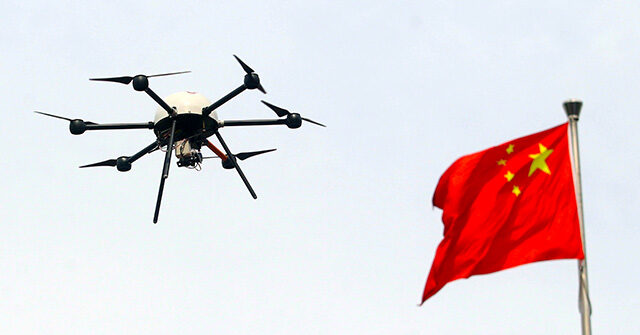The recent uproar over drone sightings in New Jersey has drawn sharp criticism from China’s state-run Global Times, which ridiculed the U.S. as a “breeding ground for delusion.” The outrage largely stems from remarks made by House Foreign Affairs Committee Chair Michael McCaul, who suggested that these mysterious aircraft may be “Chinese spy drones.” The Global Times contended that this situation parallels the earlier “spy balloon” incident, insinuating that U.S. politicians thrive on framing China’s actions in an exaggerated threat narrative. They characterized such claims as part of a repetitive script designed to tarnish China’s image, suggesting that the U.S. is driven by misguided paranoia rather than substantiated threats.
The narrative of Chinese espionage is not new, as there have been multiple instances where the U.S. government has raised alarms about various Chinese technologies. The Global Times pointed to the criticism surrounding Chinese “spy cranes,” which were alleged to have capabilities for intelligence gathering. Despite the evidence presented, including the FBI’s discovery of intelligence-gathering equipment mixed with shipments of these cranes, China maintains that U.S. concerns are exaggerated and driven by unfounded fears of Chinese influence. This portrayal underscores a broader stance by Beijing: that accusations of espionage are merely political maneuvers by American officials seeking to vilify China for their interests.
Furthermore, the Global Times argued that the recent accusations against “Chinese spy drones” coincide with legislative efforts in the U.S. aimed at increasing scrutiny over Chinese-made drones through the National Defense Authorization Act (NDAA) for Fiscal Year 2025. This act aims to prohibit the use of Chinese drones by adding specific companies to a federal “Covered List.” The action reflects a growing sentiment among U.S. lawmakers and national security officials that claim Chinese drones pose a significant risk. However, critics within the U.S. argue that such moves are politically motivated and could harm American industries reliant on these technologies.
Proponents of the drone ban believe that the fears surrounding Chinese drones are justified and necessary for national security; however, many public safety agencies and agricultural groups have expressed concerns that eliminating Chinese drones could cripple their operations due to the relative advantages these drones offer. It is estimated that 90% of public safety agencies are currently using Chinese drones, making the potential legislation a double-edged sword that could bring significant disruptions to essential services. As highlighted in the NDAA’s provisions, the implications of such bans could dramatically impact various sectors, especially given that many American farmers regard Chinese drones as superior to domestic alternatives.
The U.S. Senate’s recent decision to act on the NDAA signifies a significant shift in the approach toward Chinese technology within the realm of defense and surveillance. Legislators have labeled prominent Chinese drone manufacturers, such as DJI, as threats, leading to comparisons that conflate their drones with other controversial Chinese technologies like TikTok. The Global Times emphasized DJI’s dominance in the U.S. drone market, where it reportedly commands around 90 percent, largely by providing a more cost-effective alternative to American products. DJI has responded to these accusations by claiming that their drones are essential tools across various sectors in the U.S., asserting that they do not transmit data back to the Chinese government.
Despite the ongoing speculation about the origins of the drones sighted over New Jersey, a clearer picture remains elusive. McCaul and other U.S. officials have suggested that sightings over military installations might be linked to adversarial actors, potentially including China, fueling a narrative of surveillance and espionage. However, the FBI, FAA, Pentagon, and Department of Homeland Security collectively pointed out that the observed aerial phenomena might also include commercial drones, hobbyist models, as well as misidentified natural objects. This juxtaposition between heightened political rhetoric and the more mundane reality of aerial activity over involved regions serves to illuminate the intricate path of international relations fueled by technology, espionage fears, and the burgeoning rivalry between the U.S. and China.

